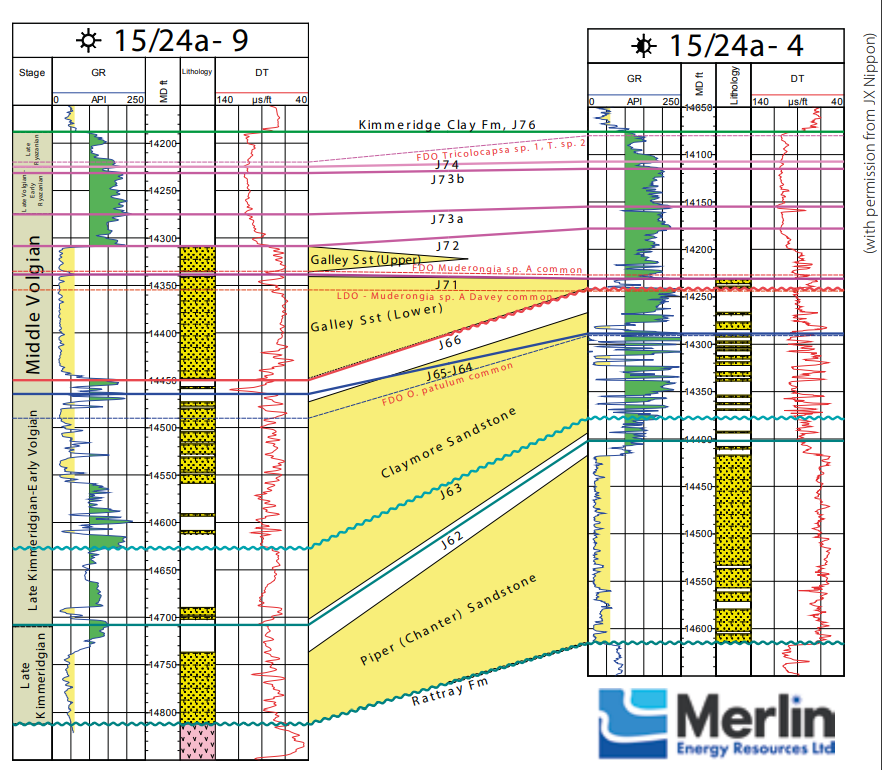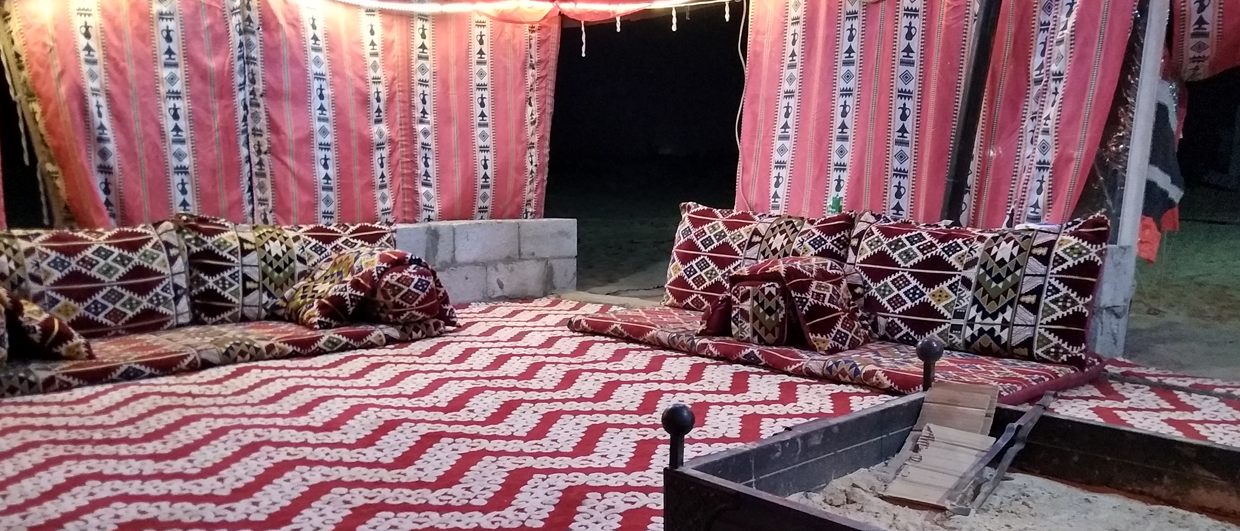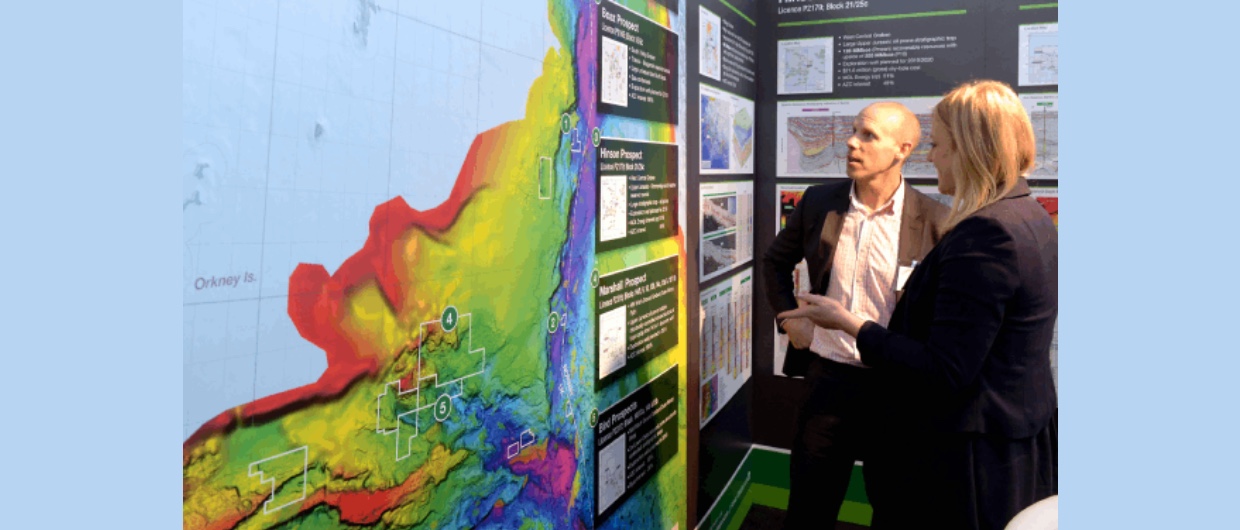Many stratigraphers are employed in the oil industry both within oil companies, and more commonly, in service companies; their task is to determine the geological succession in well sections, in terms of rock units (lithostratigraphy), age (chronostratigraphy) and environment of deposition, by an integration of lithological information, wireline logs and fossil content (biostratigraphy). In the industry, biostratigraphy is usually based on micropalaeontology, which is the recovery and identification of microfossils which are sufficiently small to survive the drilling process. The most important microfossil groups are both organic (dinocysts, spores and pollen) and inorganic (foraminifera, ostracods, conodonts, calcareous nannoplankton). Microfossil extraction requires laboratory processing and identification of the recovered specimens by microscopic examination.
Microfossils are amazingly versatile – they often occur in high abundance, even in small well samples, and can occur in palaeoenvironments ranging from freshwater to deep marine, from sediments ranging in age from the Palaeozoic to the present day. Distinctive assemblages of microfossils may typify particular rock units, for example, some reservoir limestones in North Africa and the Middle East contain foraminifera in such abundance that they are rock-forming and their presence and orientation also influence porosity and permeability. Their preservation, particularly their colour, can also be used as a measure of thermal maturity.
To be a good stratigrapher it helps to have an interest in the natural world, and in fossils, something I first became interested in at school. This led me to choose to study geology at Nottingham University, where we had a module in micropalaeontology. I enjoyed it enough to want to study the subject further, and was fortunate to be offered a PhD project at Aberystwyth University on the Lower Jurassic foraminifera from the well-known Mochras Borehole. This was in the early 1970s, when the hydrocarbon industry in the UK (North Sea) was just taking off (Brent Field was discovered in 1971), and I hoped that this could lead to a career in the oil industry. I have worked in a range of companies, including consultancies like Robertson Research, IEDS and IHS, together with oil companies including BNOC, Britoil and BP.
I now work for geoscience consultancy Merlin Energy Resources, as a member of a small team of geoscientists carrying out integrated subsurface evaluations for a number of client oil companies. My current role is both as a stratigrapher and petroleum geologist, working in small teams, alongside geoscientists with other specialisations such as reservoir geology, petrophysics, structural geology, seismic interpretation, geophysics, and rock physics. Our aim is to provide high quality, integrated evaluations of the subsurface, a technical mix that has been popular with our many clients over nearly 20 years.
EYE FOR DETAIL
Dr. Phil Copestake, stratigrapher and director of Merlin Energy Resources.A micropalaeontologist needs good observational skills with a keen eye for accurate identification of often less than ideally preserved fossils and the ability to recognise an evolutionary succession of species. This is the basis of biozonation schemes that are used to subdivide and correlate rock successions and provide evidence of age.
In any basin being newly explored there is always the potential for something previously unknown to science to be found, and that might turn out to be a key marker, therefore a biostratigrapher will always be looking to spot new species. However, we are working in the commercial world, where the main constraint is always time, and therefore, cost. Although we want to increase our knowledge base, an industrial biostratigrapher can only spend a certain amount of time on each sample. Therefore for more complex stratigraphic successions, where more work is justified, industry will sponsor academic research that allows more detailed investigations to be made. The oil industry has played a major role in the development and understanding of biostratigraphy over many decades by supporting research and by carrying out industrial investigations from many basins worldwide. A stratigrapher should always aim to be at the forefront of new knowledge, either by pursuing or sponsoring new research. To understand the offshore stratigraphy it helps to know the stratigraphic distributions of the key microfossil taxa in onshore outcrop sections that are dated independently (in the case of the Jurassic, by ammonites). I carry out this type of research in my personal time, particularly on the Jurassic of the UK, often in collaboration with other researchers.
AT THE WELLSITE
Biostratigraphers are often asked to work at the well site to support operational decisions while drilling. For example, by monitoring the biostratigraphic succession while drilling, and with a prior knowledge of the successions in nearby offset wells, it is possible to predict what will be encountered ahead of the drill bit; this can aid the setting of casing points (e.g. above high pressure formations) or help with TD decisions. Well site biostratigraphy can also guide horizontal drilling (“biosteering”), whereby knowledge of the expected microfossil assemblages above, within and below a reservoir can help steer the drill bit within a thin reservoir layer, and also find faults visible on seismic. It can therefore be cost-effective to have a biostratigrapher at the well site as these techniques can save considerable drilling time and aid safe and successful well completions to be made. In the case of horizontal drilling, this allows the successful development of smaller discoveries with fewer wells, each of which has higher production than a traditional vertical well.
WELL CORRELATIONS & LEGACY DATA SETS
Much of a stratigrapher’s work, however, is undertaken in an office situation, where one of the key tasks is correlating ‘tops’, the upper depth limits of formation and key biostratigraphic markers, between wells. The usual working data set comprises the completion logs and biostratigraphic reports from a number of wells, spanning a range of vintages. It is useful to have access to modern stratigraphic data, however, in most cases interpretations have to be based on legacy data sitting in well files (or available in released data sets, e.g. Common Data Access, or CDA, in the UK). Most of the stratigraphic interpretations that we carry out these days at Merlin are based on legacy data; any new analysis is contracted out to one of the several high quality specialist stratigraphic consultancies in the UK.
If you take the legacy data at face value, it can be difficult to make accurate interpretations and well correlations; apart from anything else, there have been nomenclature changes over the years. In the early days of exploration, biostratigraphers were finding many new species and there was not so much comparative information readily available – so identification of species could be uncertain. Companies developed their own nomenclatures, so species A in one company was referred to as species B in another, for example; while this species may have later been formally published, however, those old names will still exist in the legacy biostratigraphic reports. The stratigrapher needs therefore to be aware of all this in order to understand the legacy data set and to provide a consistent set of ‘picks’ for today’s evaluations.
Demonstrating the lateral subsurface relationships apparent between wells, by means of well correlations, is a fundamental technique that is used to determine the essential distribution of rock units, including reservoirs, source rocks and sealing formations. Lateral pinchouts/shale outs of reservoirs can also be demonstrated, together with intervals of missing section (unconformities) and horizons of major transgression/onlap; these latter features are key to sequence stratigraphic analysis (see below).
One of the prime aims of defining stratigraphic tops is to help seismic interpreters to determine the stratigraphic identity of key seismic horizons, and it is critically important to any block or regional evaluation that the stratigraphic control is consistent across the interpreted data set. A further key role of stratigraphy is in basin modelling, for which a knowledge of the geological history, geochronological time scale, the breaks in deposition, and timing of major structuration, such as burial and uplift phases, is needed.
SEQUENCE STRATIGRAPHY
I have been fortunate enough in my career to have found new microfossil species and worked in emerging areas of the science, one of which is sequence stratigraphy. A biostratigrapher is often able to recognise stratigraphic breaks – unconformities – on the basis of missing biozones and lithostratigraphic units. Early in my career, the realization that unconformities could be recognised at the same geological levels from well to well over wide areas in the North Sea basin coincided with publication of research by Exxon (Vail et al., 1977) describing how sequences could be recognised in seismic data sets from many basins globally, including the North Sea (Vail & Todd, 1981). Galloway (1989) later emphasised the importance of maximum flooding surfaces in sequence stratigraphy; this chimed with the fact that such transgressive condensed sections were clearly present in many wells and at consistent levels, as recognised by stratigraphically supported well correlations. Due to the limits of seismic resolution, well-based biostratigraphy is able to identify more sequences breaks than seismic and it is therefore a critical tool in sequence stratigraphic analysis.
I was working for Britoil when it was acquired by BP in 1988, and the two North Sea geoscience regional teams combined their knowledge to carry out large scale regional studies in which key North Sea sequences were defined through the integration of seismic and well-based stratigraphy. This led to the definition of regional sequence stratigraphic schemes, which I was fortunate to be involved with (Partington et al., 1993); later, also, with Andy Sims of Merlin, and other colleagues, we published a standard Lower Cretaceous sequence stratigraphy scheme for the North Sea (Copestake, Sims et al., 2003; Copestake, 2003). Some of the work we had carried out in Britoil on utilising biostratigraphy to support a new lithostratigraphy, tied to maximum flooding surfaces, was also published in the early 1990s (Mudge & Copestake, 1992).
INTEGRATION IS KEY
Integration of the results of biostratigraphy with other aspects of hydrocarbon exploitation, for example, ensuring that stratigraphic interpretations can be extrapolated away from wells via seismic interpretation, by providing age control for geochemical basin modelling, or by detailed reservoir zonation and correlation to aid field development. Stratigraphy is but one, albeit fundamental tool in the explorationist’s toolkit. At Merlin, stratigraphy is utilised as one part of a wider spectrum of geoscience applications that combined together provide more robust subsurface evaluations than any of these single disciplines alone. It is this integration that is key to successful exploration, and it is satisfying to see that biostratigraphy is now accepted as a core discipline in hydrocarbon exploitation, a situation that was certainly not the case early on in my career when biostratigraphers had to regularly prove their worth to the mainstream exploration and development teams.
The requirement for high resolution stratigraphy is as significant today as ever, for example in the North Sea where the exploration for subtle stratigraphic traps and high resolution reservoir zonations requires a detailed knowledge of subsurface stratigraphic relationships. Also, as new areas are opened up for exploration, such as the deep water areas on the margins of the Atlantic, Pacific, Mediterranean and Arctic, the foundation of the subsurface understanding is based on the stratigraphy, which is itself founded on the biostratigraphy.
I am sure the discipline of micropalaeontology will continue to have a major application both in the oil and gas industry and in geological science in general for many years to come. There is so much yet to discover, as more basins are explored in many regions of the world. Looking down a microscope and finding completely new species – that’s good fun. But applying that knowledge to find oil and gas – now, that’s really good fun!
To contact Phil at Merlin Energy Resources in Ledbury visit www.merlinenergy.co.uk






